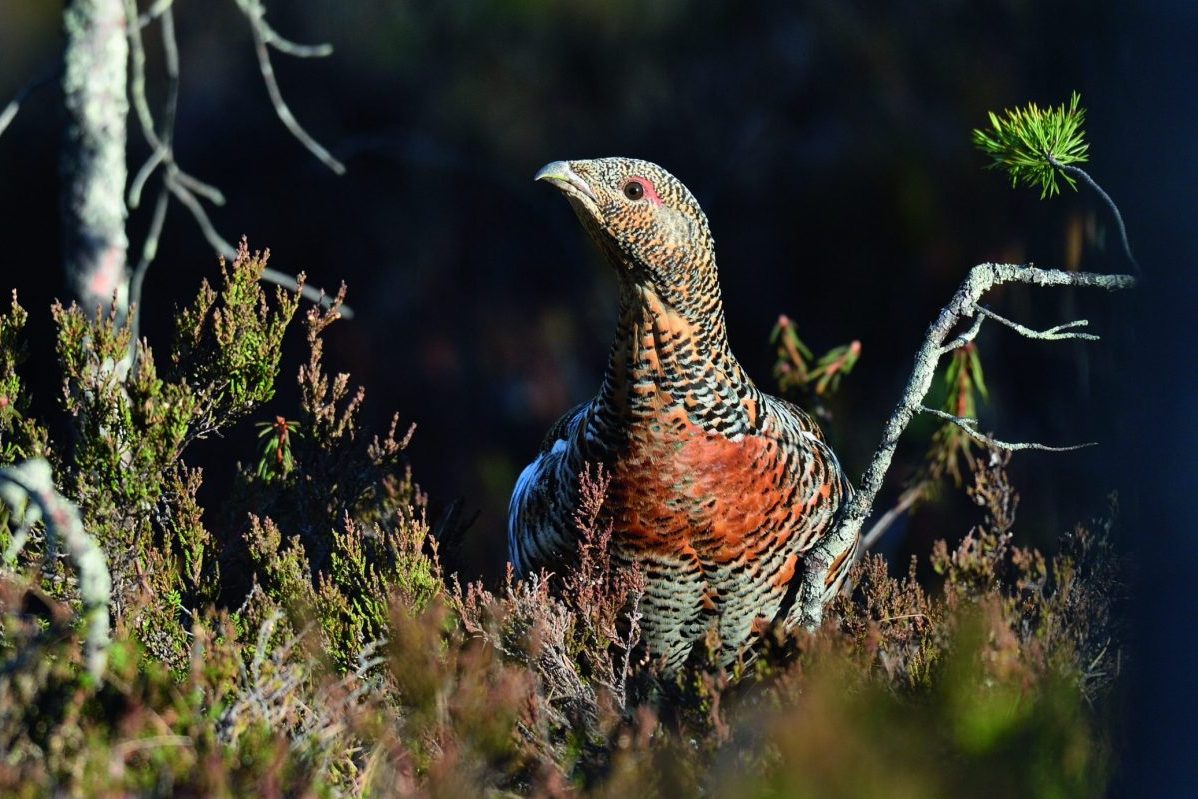Finland – where black grouse are thriving
A visit to Finland, where black grouse and capercaillie are plentiful, highlights just how shooting and conservation can go hand in hand

The Finnish approach to conservation is refreshingly pragmatic and pretty unemotional
I recently spent 10 days in the forests of Finland. I was there as part of a research trip to understand a bit more about curlew breeding habitats, but within a few hours it became clear that grouse are the headline act in that part of the world.
Even as I arrived in the warm half-darkness of a Finnish twilight, black grouse were noisily displaying on a bog near the wood cabin where I was due to stay. I was delighted to hear them; that bubbling sound reminds me of home, and it gave me a reassuring swell of delight to find old friends in new places. But the novelty soon wore off, and I began to realise that black grouse provide a constant audio backdrop to these forests.
Special sound
We are used to leks in Scotland where three or four birds gather together. It’s a special sound, and people travel across the UK to hear it. But in Finland, the sound of birds at the lek becomes a constant hum. There were times when I could hear 70 birds, and that’s when the call became new — it gathered a momentum of its own, and I started to see that a single bird is not meant to be heard in isolation. The leks work best when they’re scattered evenly across miles of bog and forest, and the calls ripple together like a steady, constant purr.
By the end of the first day, I had become preoccupied with hazel grouse. I had never seen them before, and I was immediately enthralled by those little birds that look something like a cross between a ptarmigan and an English partridge. These birds are a staple for sporting Guns in the autumn, but in the height of May, they were busily laying down territories and pairing up.
Seeing them flush away from me as I walked, I reckoned they’d make for a challenging day’s shooting, and the quantity of birds I saw in a very small area would suggest that you’d be well advised to take more than just a pocketful of cartridges.
As we moved away from the hazel grouse, the capercaillie seemed to be everywhere. Even on short drives along forest tracks, the birds were still easily visible on the verges or collecting grit from the road. I had some extraordinarily close encounters with them myself, and I found myself stunned by the sudden clattering flush of cocks and hens as I walked through the trees.
I’ve been closely involved with capercaillie conservation in Scotland for 15 years, and yet in Finland I saw more birds in an hour than I’d usually expect to see in an entire year. I was particularly drawn to the female birds, which are wondrously exciting when seen at close quarters. Their colouring is beautiful, and the rich, orange tone on their breast seems to glow at dawn and dusk in the forest — it’s a perfect match for the colour of pine bark, and the camouflage effect is miraculous.
It’s not easy to develop a relationship with capercaillie in this country, but I got a sense of them as the days went by. They’re canny birds, and they know how to take care of themselves. Far from being objects of pity and conservation concern, Finnish foresters are able to shoot big numbers of capercaillie every year, and those harvests are supported by varying degrees of predator control, which includes management of pine martens and badgers.
The Finns have a refreshingly pragmatic approach to conservation, and they’re free from many of our emotional hang-ups about doing the right thing. Black grouse, hazel grouse and capercaillie are valued for their sporting potential, and people take their conservation seriously.
There are many parallels with land management for grouse in this country, but while British moors face a range of political threats, I felt that Finns were proud of their relationship with their landscapes and wildlife. They’re right to be proud, and I wish that UK conservationists could take a leaf out of their book.








